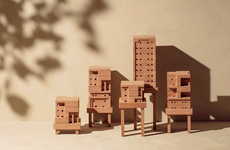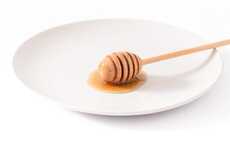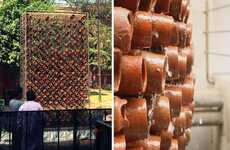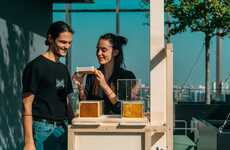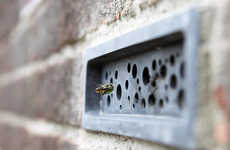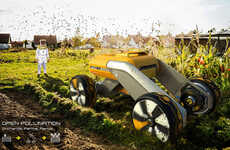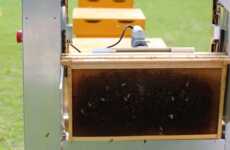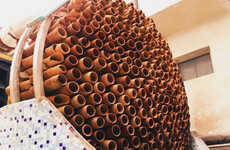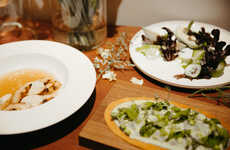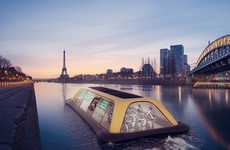
The Synthetic Apiary Has Created a Habitable Space for Bees
Mishal Omar — October 10, 2016 — Eco
References: fastcodesign
There is no question that bee populations around the world are facing increasingly inhospitable environmental conditions and the 'Synthetic Apiary' was created to help counter this fact.
The space was designed by MIT's 'Mediated Matter Group' which specializes in "nature-inspired design and fabrication." The Synthetic Apiary is being used for research purposes as well as to house bees in an environment that matches the ideal living conditions they require. The space was designed to ensure and optimize bees' health and ways of life and features humidity and light levels that were designed to replicate the environmental conditions seen during the month of May.
This bee sanctuary is crucial in a world where the depletion of the bee population needs to be addressed immediately for the sake of the health of the environment, animals and human beings.
The space was designed by MIT's 'Mediated Matter Group' which specializes in "nature-inspired design and fabrication." The Synthetic Apiary is being used for research purposes as well as to house bees in an environment that matches the ideal living conditions they require. The space was designed to ensure and optimize bees' health and ways of life and features humidity and light levels that were designed to replicate the environmental conditions seen during the month of May.
This bee sanctuary is crucial in a world where the depletion of the bee population needs to be addressed immediately for the sake of the health of the environment, animals and human beings.
Trend Themes
1. Synthetic Apiaries for Bee Preservation - Creating artificially constructed bee homes to help preserve bee populations and promote environmental sustainability.
2. Nature-inspired Design and Fabrication - Innovating through nature-inspired design to create sustainable solutions for environmental issues.
3. Optimizing Environmental Conditions for Living Organisms - Using modern technology to mimic and optimize the ideal living conditions for various types of creatures.
Industry Implications
1. Agriculture - Creating artificial habitats for bees to pollinate crops and increase crop yield.
2. Sustainable Design - Utilizing nature-inspired design and fabrication for creating sustainable and eco-friendly structures and spaces.
3. Ecology/conservation - Developing innovative solutions to preserve and protect endangered animal populations, including bees.
2.3
Score
Popularity
Activity
Freshness

